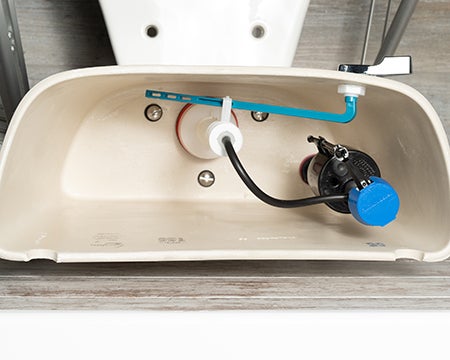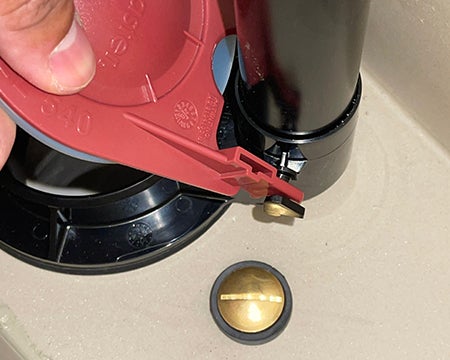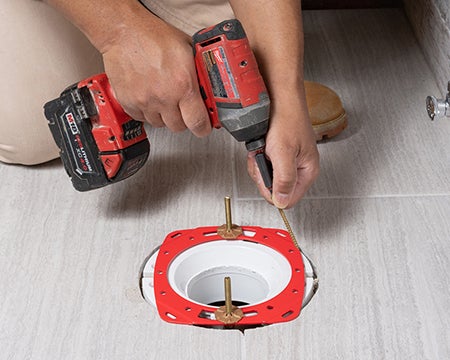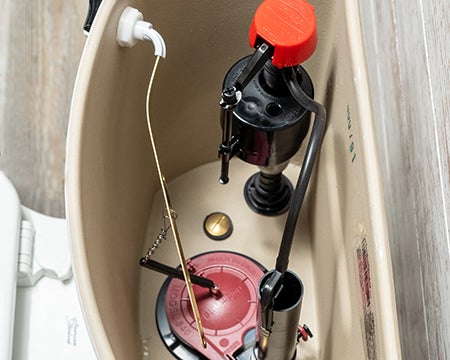When you’re lying awake in bed at 2 a.m. and suddenly hear your toilet flush, it’s not because you have a ghost. Instead, it’s a case of your toilet tank refilling due to water loss through the flapper. Ghost flushing, also known as phantom flushing, is a common issue that affects many homeowners. If left unchecked, ghost flushing can cause unnecessary water wastage and increased utility bills.
This blog post will explain what ghost flushing is and how to diagnose the problem, and then provide step-by-step instructions on how to fix it. With our help, you'll be well-equipped to tackle ghost flushing and keep your toilets running smoothly.
What is Ghost Flushing?
Ghost flushing, or phantom flushing, occurs when your toilet tank refills independently without anyone pressing the handle. Water leaks from the tank into the bowl, causing the fill valve to activate periodically to refill the tank. It’s similar to your toilet flushing itself, but it’s just refilling.
What Causes Ghost Flushing?
Several common issues can cause ghost flushing:
- Faulty Flapper Valve: This is often the most common cause. Over time, the flapper can deteriorate and no longer create a watertight seal.
- Cracked Toilet Tank: Cracks in the tank can lead to water leakage, which triggers the fill valve.
- Issues with the Fill Valve: A malfunctioning fill valve can lead to improper water levels in the tank, causing ghost flushing.
- Misalignment or Damage to the Flush Valve Seat: If the flush valve seat is misaligned or damaged, it won’t seal properly, leading to water leaks.

What are the Causes of Ghost Flushing
Before you can fix ghost flushing, you need to identify the underlying cause correctly. Begin by visually inspecting the toilet tank components by removing the lid and examining them. Look for any obvious signs of wear, damage, or misalignment.
Next, we recommend performing the dye test to detect leaks. Add a few drops of food coloring to the toilet tank and wait about 20 minutes. If the color appears in the bowl without flushing the toilet, this is a clear sign of a leak.
Also, check the inside and outside of the toilet tank for any visible cracks or damage. Pay extra attention to the area around the flush and fill valves.
Last, you will need to inspect the flapper valve for signs of wear and tear, such as discoloration, warping, or a rough surface.
Solving Common Issues
1. Replacing a Faulty Flapper Valve
If a faulty flapper valve is causing your ghost flushing, you must replace it. When selecting a new one, ensure it matches the size and type of your existing valve. Most toilets use 2-inch or 3-inch flappers.
Step-by-step guide on how to replace a faulty flapper valve:
- Turn off the water supply near the toilet’s base using the angle water stop valves.
- Flush the toilet and keep the handle depressed to empty the tank.
- Remove the old flapper by detaching the chain from the toilet handle and separating it from the two posts on the flush valve.
- Attach the new flapper to the flush valve posts, ensuring it’s compatible with your toilet model.
- Connect the flapper’s chain, ensuring it has a small amount of slack.
- Turn the water supply back on using the angle water stop valves and let the tank fill.
- Flush the toilet to test. You may also use the dye test to confirm the flapper is sealing correctly.

2. Adjusting or Replacing the Fill Valve
If your tank’s water levels fluctuate irregularly or you notice constantly running water, your fill valve may have issues.
Step-by-step adjustment or replacement instructions:
- Turn off the water supply and flush the toilet to empty the tank.
- Adjust the fill valve float per the manufacturer’s instructions to ensure the correct water level.
- If adjusting doesn't resolve the issue, remove and replace the fill valve with a new one, following the product’s installation guide.
Replacing the entire toilet can be a more effective and long-lasting solution. Newer models use less water per flush, reducing your water bill, and come with advanced flushing technologies that minimize clogs and improve performance. A new toilet can update your bathroom’s look, eliminate recurring leaks, and prevent potential water damage to your floor and subfloor.
Additionally, consider changing the toilet supply lines to ensure a secure, leak-free connection.

While considering a new toilet, make sure the mounting flange is in good condition. The Oatey® Fix-it Repair Ring provides an easy solution for repairing broken, cracked, or worn-out toilet mounting flanges without replacing them. The Oatey® Fix-it flange repair ring is engineered to connect the floor and toilet securely.

4. Repairing the Flush Valve Seat
Flush valve repair kits are readily available at most hardware stores. Follow the instructions provided to reseal or replace the flush valve seat. If you’re uncomfortable repairing the flush valve seat, consider hiring a professional plumber to ensure the job is done correctly.

Ghost flushing is a common but fixable issue that can lead to excessive water waste and higher utility bills. You can quickly stop ghost flushing by understanding the causes and following our step-by-step guides. So don’t delay — act quickly to address ghost flushing, so you can save water and money and get a good night’s sleep!
For more tips on reducing water waste, check out our blog post on how to reduce water waste in the home.